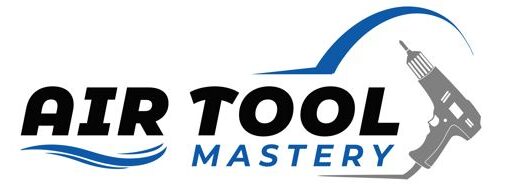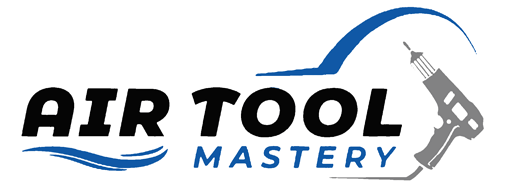Pressure washing, or power washing, is a cleaning method that utilizes pressurized water to remove dirt, grime, mold, and other undesirable substances from various surfaces. Before we dive into the tips on pressure washing, it is crucial to first appreciate what pressure washing is. This process is essential for maintaining the aesthetic appeal and longevity of your property, whether it’s your home, office, or industrial site.
It’s not just about appearances, though; regular pressure washing keeps surfaces safe and hygienic, thus contributing to a healthier environment. When it comes to pressure washing equipment, pneumatic washers stand out as the best choice.
These devices, powered by compressed air, offer superior efficiency, power, and durability. Their unique combination of high-pressure output and controlled water flow ensures a thorough, yet gentle, cleaning experience. In the upcoming sections, we’ll delve deeper into the world of pressure washing, offering valuable tips and insights on how to make the most of your pneumatic washer.
How Pressure Washing Works
Pressure washing might appear simple on the surface, but the underlying mechanism involves a fascinating interplay of physics and engineering. It begins with the water source, typically your regular garden hose, which feeds water into the pressure washer.
The heart of the pressure washer is its pump. The pump is powered by, in this case, a pneumatic motor that uses compressed air, making it significantly more potent than regular electrically powered washers. As the motor powers up, it drives the pump, which works like a compressor. It sucks in water and then forces it out under high pressure.
Pressure washers are equipped with a high-pressure hose and a trigger gun. The hose is designed to withstand the high pressure provided by the pump. When you squeeze the trigger on the gun, it releases a jet of high-pressure water capable of dislodging dirt and grime on surfaces.
The interesting part of pressure washing is how you control this powerful jet of water. Pressure washers typically come with a set of interchangeable nozzles, each designed for a different cleaning task. These nozzles control the angle and intensity of the water spray. Some spread out the water for gentle cleaning, while others focus it into a narrow jet for intensive cleaning tasks.
To sum up, pressure washing works by using a high-pressure water stream to break up the dirt on the surface. It’s a powerful cleaning tool, but using it requires knowledge and practice. So, before you start, ensure you understand the correct pressure settings, the right nozzle for the job, and safe operating procedures to get the most out of your pressure-washing experience.
Types of Pneumatic Pressure Washers
1. Portable Pneumatic Pressure Washers
As the name suggests, these are compact and lightweight washers that can be moved around easily. They are perfect for small cleaning tasks like washing your car or patio furniture.
2. Stationary Pneumatic Pressure Washers
These washers are larger and heavier than portable ones and are designed for heavy-duty cleaning tasks. Professionals commonly use them for industrial or commercial cleaning jobs.
3. Trailer-Mounted Pneumatic Pressure Washers
For even more power, you can opt for a trailer-mounted pneumatic pressure washer. These units come equipped with their own water tanks and can be towed behind a vehicle for easy transport.
Tips On Pressure Washing Using Pneumatic Washers
Now that you know the different types of pneumatic pressure washers, here are some general tips to keep in mind when using them
1. Always wear protective gear
Pneumatic pressure washers use highly pressurized water, so it’s crucial to protect yourself from any potential injuries. Wear safety glasses, gloves, and closed-toe shoes when operating the machine.
2. Test a small area first
Before starting a cleaning job, test a small area with different pressure settings and nozzle sizes to find the most effective combination. This will also help you avoid damaging delicate surfaces.
3. Keep a safe distance
Maintain a safe distance between the pressure washer nozzle and the surface being cleaned to prevent any accidental damage or injury from flying debris.
4. Use the right detergents
Certain cleaning tasks may require the use of detergents to effectively remove stubborn stains or grime. Make sure to use the appropriate detergent for your specific cleaning job and follow the manufacturer’s instructions.
5. Clean in a sweeping motion
When pressure washing, it is best to move in a sweeping motion instead of staying in one spot for too long. This helps prevent any streaking or uneven cleaning.
6. Rinse thoroughly
After cleaning, make sure to thoroughly rinse the surface with plain water to remove any remaining detergent or debris.
7. Follow the manufacturer’s instructions
Always refer to the manufacturer’s instructions for proper use and maintenance of your pneumatic pressure washer. This will ensure its longevity and safe operation.
8. Regular maintenance
To keep your pressure washer in top condition, it’s important to perform regular maintenance tasks such as checking for any leaks, cleaning the nozzles and filters, and replacing worn or damaged parts.
9. Know your surfaces
Different surfaces require different levels of pressure and techniques when pressure washing. Be sure to research and understand the appropriate settings for the surface you are cleaning to avoid causing any damage.
10. Safety first
Always wear protective gear, such as goggles and gloves, when using a pneumatic pressure washer. It’s also important to be aware of your surroundings and keep others at a safe distance while operating the machine.
Troubleshooting Common Problems
Fluctuations
Pressure fluctuations in a pneumatic washer can be disruptive and reduce the efficiency of your cleaning. If you notice an inconsistent pressure flow, first ensure that the water supply is strong and consistent. Check the inlet for any obstructions or kinks in the hose.
The Washer won’t Start
There are occasions when the pneumatic pressure washer won’t start. In such a case, ensure that the machine is properly connected to a power source. Check the circuit breaker and the fuse to make sure they are in working condition. If your washer is gas-powered, verify that there is sufficient fuel and that the oil levels are appropriate.
Pneumatic Washer Not Siphoning Detergent
Another common issue with pneumatic washers is the failure to siphon detergent. If this occurs, first check to ensure that the siphon tube is properly connected and not damaged. Next, verify that the detergent being used is suitable for pressure washers. Lastly, check the nozzle setting. Most washers will only siphon detergent on low-pressure settings, so ensure the nozzle is set correctly.
Conclusion on the Tips on Pressure Washing
Pressure washing can be a highly effective way to clean a variety of surfaces. With the right tips on pressure washing and techniques, using a pneumatic washer can make the process even more efficient and effective. Remember to always prioritize safety and perform regular maintenance on your washer to ensure it is working properly.

